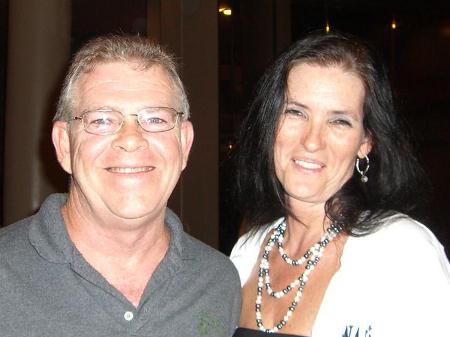It is not always easy to see the connection between a sexual behavioral pattern and a disease process. Often this is because we notice the behaviors as a syndrome and correlate them with a psychiatric disorder that is not yet proven to have a pathological process in the body (brain). The case of Sally is helpful here.
Sally was a 43-year-old married woman whose husband was employed as a utility repairman. It was the second marriage for him and the third marriage for her. Together they had no children, but she had two daughters (ages 20 and 18) and he had a son (age 14) by previous marriages. She worked as a clerical staff person in a construction company.
They sought marriage counseling in crisis because Sally had had a sexual relationship with a neighbor, the father of one of her stepson’s friends. In the initial history, Sally reported that she had always felt she had a higher sexual drive than other women she knew. She judged herself to be slightly better than average in appearance, and she thought she often “gave off vibes” to men that she was sexually interested in them, even though they had met only casually. She said that men usually responded to her, and it was not difficult to conclude a casual meeting with a sexual encounter. Sally judged that she had had approximately thirty to thirty-five sexual partners in her life, all of them men, except once when she engaged in a mйnage а trois with a man and a woman.
Sally described most of the sex as involving little knowledge of the other person but very intense in terms of sexual drive and pleasure. She felt that the men were interested in sex also and that neither they nor she sought any lasting or committed relationship. She said she loved her husband and did not want the recent sexual wandering to ruin the marriage as it had in the two previous marriages. She wanted this time to be different and was convinced that it would be.
In her initial history-taking session with Sally, Dr. M. took a complete and careful sexual history and a detailed mental status examination. From both the history and the present mental status, Dr. M. concluded that Sally’s episodic high drive correlated with other symptoms of a bipolar II disorder.
On closer examination of the sexual encounters, Sally was able to see that there was an episodic quality in the frequency of the behaviors. For months she would have what she felt was low (for her) sexual desire and interest, and then a period ranging from four to six weeks when she would become, in her words, “sexually alive.” Also during these periods of being sexually alive, Sally would have a great deal of energy, undertaking exercise programs, requiring little sleep because of all she wanted to accomplish, and, on occasion, spending to such a degree that she “maxed out” her three credit cards. During these periods, she felt as if she got along very well with her husband, although the spending caused arguments.
Sally could not describe her mood and energy level during the times between these periods of elevated mood and energy. The best she could do was to say, “It’s kinda like I feel now, since the discovery of my sexual time with N.” In the mental status examination of her present mood, Sally reported that she felt tired and was not sleeping well—which she attributed to her worries that the marriage might be breaking up. She had lost eight pounds in the past month and wanted sex with her husband only to help keep the marriage going, not because of any sexual desire or interest on her part. While she felt somewhat guilty about the sex with her neighbor, it was difficult for her to distinguish the guilt about the behavior itself from the deep regret that the trysts were discovered and her marriage threatened.
Dr. M. learned other facts about Sally that confirmed her diagnosis of bipolar II disorder. Although Sally had never received treatment from a psychiatrist or other mental health provider, her mother had been hospitalized on three occasions. The first time occurred in her mother’s early twenties and the diagnosis was schizophrenia. The last two hospitalizations had occurred within the past twenty years, and her mother was diagnosed with bipolar disorder and alcohol abuse. For the past seven years her mother had done well, avoiding alcohol and being maintained on a regimen of lithium carbonate and, more recently, Depakote (valproic acid) to keep her mood stable.
With the familial factor of affective illness, and the carefully obtained psychiatric history, Dr. M. concluded that Sally’s sexual behaviors were caused, in large part, by her affective illness. The bipolar II disorder increased her libido and diminished her ability to judge the appropriateness of her behaviors, both sexual and financial. At the time of her sexual escapades, Sally clearly had only a vague awareness of the consequences that her behaviors might have on her life and on the relationships she valued.
Dr. M. recommended both psychopharmacological and psychotherapeutic treatment. Because Sally’s mother responded well to Depakote, Dr. M. started Sally on that medication, in addition to a serotonin-specific antidepressant for her present depression. The psychotherapy had two goals: to understand Sally’s vulnerability to the excesses of bipolar disorder and to “make some sense” of the prolific sexual experiences she had had in her life.
